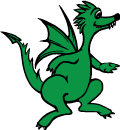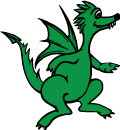
Klasa Oval
Klasa opisująca owal. Oznacza to koło, elipsę, odcinki i wycinki tych figur, oczywiście z wypełnieniem i/lub konturem. Dziedziczy po Figure. Kąt startowy to kąt 0 (leżący na godzinie trzeciej zegara). Kąty są liczone w kierunku przeciwnym do wskazówek zegara. Kąt końcowy jest zawsze większy od kąta startowego. Kąty 0°-90° leżą w pierwszej ćwiartce kartezjańskiego układu współrzędnych, etc. Kąty podawane są w radianach.
Konstruktor
0, 4, 5 albo 6 argumentów.
var oval = new Oval(). Tworzy zerowy owal.
var oval = new Oval(new Point(x,y), r, startAngle, endAngle). Przyjmuje punkt Point stanowiący środek owalu, startAngle – kąt początkowy, endAngle – kąt końcowy. Tworzy koło lub okrąg lub ich wycinek (łuk) – w zależności od zakresu kątów.
var oval = new Oval(new Point(x,y), r, startAngle, endAngle, b). Przyjmuje punkt Point stanowiący środek owalu, startAngle – kąt początkowy, endAngle – kąt końcowy, b – długość krótszego promienia elipsy. Tworzy elipsę lub jej obrys albo ich wycinek (łuk) – w zależności od zakresu kątów.
var oval = new Oval(new Point(x,y), r, startAngle, endAngle, b, segment). Przyjmuje punkt Point stanowiący środek owalu, startAngle – kąt początkowy, endAngle – kąt końcowy, b – długość krótszego promienia elipsy, segment – czy to jest odcinek koła. Tworzy odcinek koła albo elipsy lub ich obrys – w zależności od zakresu kątów.
Właściwości
| Właściwość | Opis | Wartość lub klasa obiektu | Wartość domyślna |
|---|---|---|---|
| center | punkt Point wyznaczający środek owalu
|
Point |
– |
| r | promień koła lub dłuższy promień elipsy | liczba rzeczywista | |
| startAngle | kąt początkowy | liczba rzeczywista | – |
| endAngle | kąt końcowy | liczba rzeczywista | – |
| b | krótszy promień elipsy | liczba rzeczywista | r |
| segment | true – figura jest odcinkiem koła lub elipsy albo ich konturów, false – figura jest kołem, elipsą albo wycinkiem koła lub elipsy albo konturem tych figur. |
true albo false | false |
Funkcje
| Typ zwracany | Nazwa | Opis | Przykład |
|---|---|---|---|
Oval |
deepclone() |
Tworzy głęboką kopię tego owalu. | Rysowanie figur wypełnionych Rysowanie konturów figur Rysowanie figur wypełnionych z konturem |
Point |
barycenter() |
Zwraca punkt Point będący środkiem (ciężkości)tego owalu. |
|
void |
draw(context) |
Rysuje owal zgodnie z podanymi parametrami. |
Listing
var Oval = function() {
var len = arguments.length;
this.counterClockwise = true;
if (len == 0) {
this.center = new Point(0, 0);
this.r = 0.0;
this.startAngle = 0.0;
this.endAngle = 0.0;
this.b = this.r;
this.segment = false;
} else if (len == 4) {
this.center = new Point(arguments[0].x, arguments[0].y);
this.r = arguments[1];
this.startAngle = arguments[2];
this.endAngle = arguments[3];
this.b = this.r;
this.segment = false;
} else if (len == 5) {
this.center = new Point(arguments[0].x, arguments[0].y);
this.r = arguments[1];
this.startAngle = arguments[2];
this.endAngle = arguments[3];
this.b = arguments[4];
this.segment = false;
} else if (len == 6) {
this.center = new Point(arguments[0].x, arguments[0].y);
this.r = arguments[1];
this.startAngle = arguments[2];
this.endAngle = arguments[3];
this.b = arguments[4];
this.segment = arguments[5];
}
};
Oval.prototype = new Figure();
Oval.prototype.deepclone = function() {
var figure = new StarPolygon();
figure.globalAlpha = this.globalAplpha;
figure.globalCompositeOperation = this.globalCompositeOperation;
figure.strokeStyle = this.strokeStyle;
figure.fillStyle = this.fillStyle;
figure.shadowOffsetX = this.shadowOffsetX;
figure.shadowOffsetY = this.shadowOffsetY;
figure.shadowBlur = this.shadowBlur;
figure.shadowColor = this.shadowColor;
figure.lineWidth = this.lineWidth;
figure.lineCap = this.lineCap;
figure.lineJoin = this.lineJoin;
figure.miterLimit = this.miterLimit;
figure.lineDashOffset = this.lineDashOffset;
figure.lineDashSegments = [];
for (var i = 0; i < this.lineDashSegments.length; i++) {
figure.lineDashSegments[i] = this.lineDashSegments[i];
}
figure.fill = this.fill;
figure.stroke = this.stroke;
figure.center = new Point(this.center.x, this.center.y);
figure.r = this.r;
figure.startAngle = this.startAngle;
figure.endAngle = this.endAngle;
figure.counterClockwise = this.counterClockwise;
figure.b = this.b;
figure.segment = this.segment;
return figure;
};
Oval.prototype.barycenter = function() {
return new Point(this.center.x, this.center.y);
};
Oval.prototype.draw = function(context) {
var angle = 2 * Math.PI;
context.save();
context.beginPath();
this.setProps(context);
var s = this.b / this.r;
context.translate(0, this.center.y - this.center.y * s);
context.scale(1, s);
if (this.stroke == true) {
context
.arc(this.center.x, this.center.y, this.r, angle
- this.startAngle, angle - this.endAngle,
this.counterClockwise);
context.stroke();
}
if (this.fill == true) {
if(this.segment){
context
.arc(this.center.x, this.center.y, this.r, angle
- this.startAngle, angle - this.endAngle,
this.counterClockwise);
}else{
context
.arc(this.center.x, this.center.y, this.r, angle
- this.startAngle, angle - this.endAngle,
this.counterClockwise);
context.lineTo(this.center.x, this.center.y)
}
context.fill();
}
context.restore();
};

